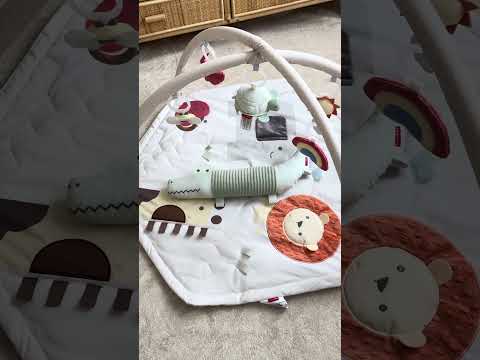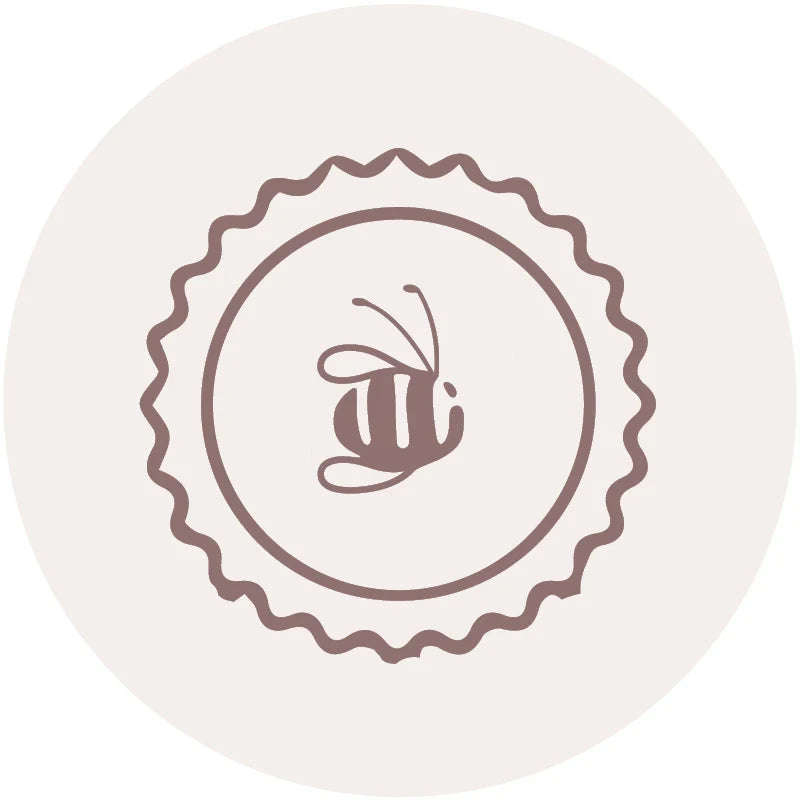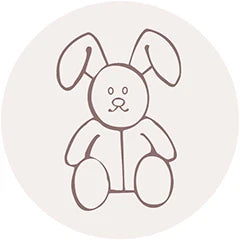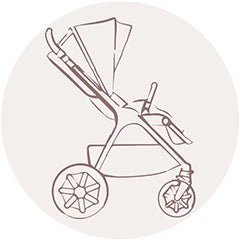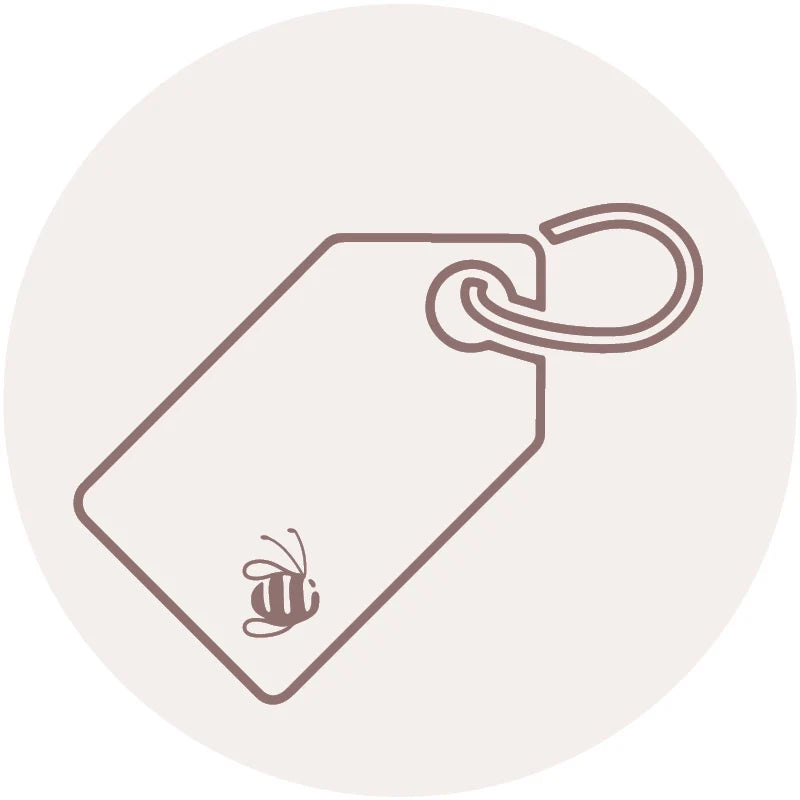Skip Hop Geometric Wonders Activity Gym
Skip Hop Geometric Wonders Activity Gym
SKU:SH9R257810
Low stock
Couldn't load pickup availability
Overview
Overview
The Skip Hop Geometric Wonders Activity Gym creates a stylish and sensory rich play space for your baby from day one. Designed with a modern geometric look, it features a soft, cushioned mat and sturdy arches with five interactive hanging toys to engage your baby’s senses through sound, texture, and color. With high contrast patterns, crinkle fabrics, and gentle rattles, this play gym helps support visual, auditory, and motor skill development while encouraging tummy time, reaching, and grasping.
Each toy can be removed,, making it just as fun in the stroller or car seat as it is on the mat. The soft crocodile tummy time pillow offers cozy support during early play, and the neutral color palette blends beautifully into any room.
Key Features
Key Features
Delivery and Returns
Delivery and Returns
- Delivery: Free within NZ on orders over $100 (excluding bulky items) or $8 standard shipping
- Returns: Accepted within 14 days of receipt with proof of purchase
- Some items are excluded from returns including sale items, hardware, car seats, prams, monitors and personal items - please click here for the full list.
Share this product
Recently Viewed Products
Related Blogs
Music for Babies
Is it a myth or a must? You may have heard that Mozart in utero is essential to healthy brain development, and Baby Einstein on repeat will produce an intellectually advanced toddler. But is music for babies really a thing? Exposing babies and toddlers to music might not necessarily be intelligence-inducing, but it definitely has its benefits for both parents and babies. Here’s what the science really says! Music in utero From around 20 weeks into pregnancy, your baby’s ears start functioning – taking in all the familiar and soothing sounds of the womb and the outside world. That might be mum’s favourite music, the sound of her voice or the constant drum of her heartbeat. So, if classical music isn’t your thing, do you need to suffer through it in the later stages of pregnancy to produce a high IQ human? The jury is out on the intellectual impact of womb-tunes, but listening to music with your unborn babe can be a nice way to schedule some regular time to unwind and bond over your favourite melodies. As a bonus, using this time to de-stress gives you a valid excuse to belt out your greatest hits in the shower. If it makes you feel good, chances are your baby will love it too. While it might be tempting to share an earphone with your belly buddy, playing music through your stereo is a much better option. Amniotic fluid acts as a conductor and can make an earphone too loud for tiny ears. If you’re happy and you know it… We all know that music has the magical ability to transform your mood, and it can do the same for babies and toddlers. Even when they’re little, babies sway or bounce to the beat and can be calmed down with their favourite songs. Using the mood-altering magic of music can also be a helpful way to set up routines for babies and get toddlers on board with chores. Upbeat numbers can get things started in the morning, and special bedtime songs signal to toddlers it’s time to wind down and get ready for sleep. Similarly, music can make chores fun. Rather than asking toddlers to tidy up at the end of the day, take a leaf out of the childcare professionals’ books and learn a ‘clean up’ song – less nagging, more dancing! Learning through music Exposing babies and toddlers to music during their early years helps with learning sounds and the meanings of words. Songs like ‘Heads, shoulders, knees and toes’ expand their vocabularies and coordination, while singing the ABCs teaches sounds and early literacy. On the maths front, popular nursery rhymes are full of repetition, a great way for young brains to learn about patterns and what comes next. Lots of nursery rhymes also include numbers – it’s practically maths for babies! Getting physical Getting their tiny groove on helps toddlers build key motor skills like jumping, balancing and clapping. Body and mind work together as they move to the beat. Spatial awareness and social skills are also learnt through movements like dancing – avoiding bumps and noticing how other toddlers move in group settings. Music for bonding Life as a new parent can be all go, so it’s nice to schedule some regular bonding time and fun with music. If you feel lacking in the creative department, check out what’s on offer at your local library or church – many offer preschool music sessions which double as a great (and easy) opportunity for new mums to escape the house. Ears and imaginations Is there anything better than a toddler who is good at listening? Music cues toddlers to move and react, a great way to develop early listening skills. Similarly, songs that call for them to stomp like a dinosaur or snap like a crocodile sharpen their ability to listen and exercise their creative brains. The best musical instruments for your mini maestro Music doesn’t need to be expensive and can easily cost nothing. Aside from singing (free), other beats like clapping, clicking fingers or stomping are easy (and also free) ways to create music at home. Once you’ve exhausted those, there are plenty of things around the home that can make a serious sound – a good old wooden spoon and pot, or clanging two pot lids together. Looking for something slightly more tuneful? The best instruments for little fingers are things that can be hit or shaken. Think soft rattles for babies, simple wooden drums, maracas or xylophones. Music to your ears The good news is, there’s no real evidence that one type of music is better for your baby’s development than another – but there is evidence that music is a good thing overall. All that really matters is that you’re having fun and enjoying music with your little one. Because if you’re happy (and you know it), chances are your baby will be happy too!
Learn moreTips & Tricks - Cleaning your Carseat
How to Keep Your Car Seat Clean (and Looking Like New!) Parents and caregivers know that washing can quickly take over your life when you’ve got little ones around – especially when it comes to car seats! Kids, being kids, seem to have a knack for turning a spotless, brand-new car seat into a treasure trove of crumbs, spills, and, well, the occasional bodily fluid. While it would be ideal to ban all food and drink from the car seat (let's face it, that’s easier said than done!), prevention is key. A full-sleeved bib worn over the straps can help catch any messes before they even get the chance to make a mark. If a major mess happens (think: vomit, diaper leaks, or spilled drinks), the sooner you clean it up, the better. In between those big cleans, a quick vacuum once a week can keep things under control and prevent crumbs from piling up. For extra protection, consider using protective car seat covers or mats to catch any messes that could cause long-term damage to your car. Here are some simple steps to keep your car seat looking fresh and clean: 1. Vacuum Your Seat Give your seat a quick shake to loosen any crumbs or debris, then vacuum up the mess before removing the car seat for a deeper clean. This will stop any stray bits from making a mess as you go! 2. Remove and Wash the Car Seat Covers Start by checking your car seat’s instruction manual for cleaning guidelines. Many car seat covers are machine washable, but some may require hand washing. Be sure to note any special instructions about detergent, water temperature, or removable parts. Pro tip: Take a few photos or a video as you remove the covers. This can be a lifesaver when it's time to reassemble! A gentle, mild detergent or just soap and water are typically your best bet. Avoid bleach or harsh chemicals, as these can damage or weaken the fabric. When it comes to drying, line drying is your safest option, as most car seat covers can't go in the dryer. Give them plenty of time to air out and dry completely. 3. Clean the Harness & Straps Use a non-abrasive cloth and warm water to spot clean the harness and straps. Follow your manual’s instructions, as some manufacturers allow using soapy water, while others may not. 4. Clean the Buckles Buckles are critical for keeping your child safe, so avoid submerging them in water or using any lubricants. Instead, spot clean them with warm water and a soft cloth, keeping them free from soap or cleaning products. 5. Clean the Shell Vacuum the car seat shell to catch any loose bits, then use an old toothbrush or cotton bud to get into those tricky nooks and crannies. A damp cloth can help wipe down any sticky or dirty areas. Make sure the shell is fully dry before putting everything back together. 6. Reassemble Your Seat If you took photos or videos while disassembling, now is the time to refer back to them! Check your manual to ensure all parts are correctly reassembled, and give the harness and buckles a final check to ensure they’re securely fitted and ready for your little one. Note: This guide is intended to help with your car seat cleaning routine, but always follow the manufacturer’s specific instructions in your car seat manual to keep your warranty intact.
Learn moreBaby Comforters: What Are They, and How To Introduce Them
There’s something very special about watching your baby snuggle into their favourite little blanket or soft toy. For many little ones, a comforter (or blankie) becomes more than just a bedtime accessory - it’s a trusted friend that brings a sense of calm and reassurance through every new stage of growing up.
Learn moreNewborns & Sleep: What to Expect and Survival Tips
Bringing a new baby home is one of life’s most beautiful - and exhausting - adventures. In this blog, Family Sleep & Wellness Coach, Lauren Moran from Little Dreamers, shares her expert advice on newborn sleep in the fourth trimester.
Learn more



